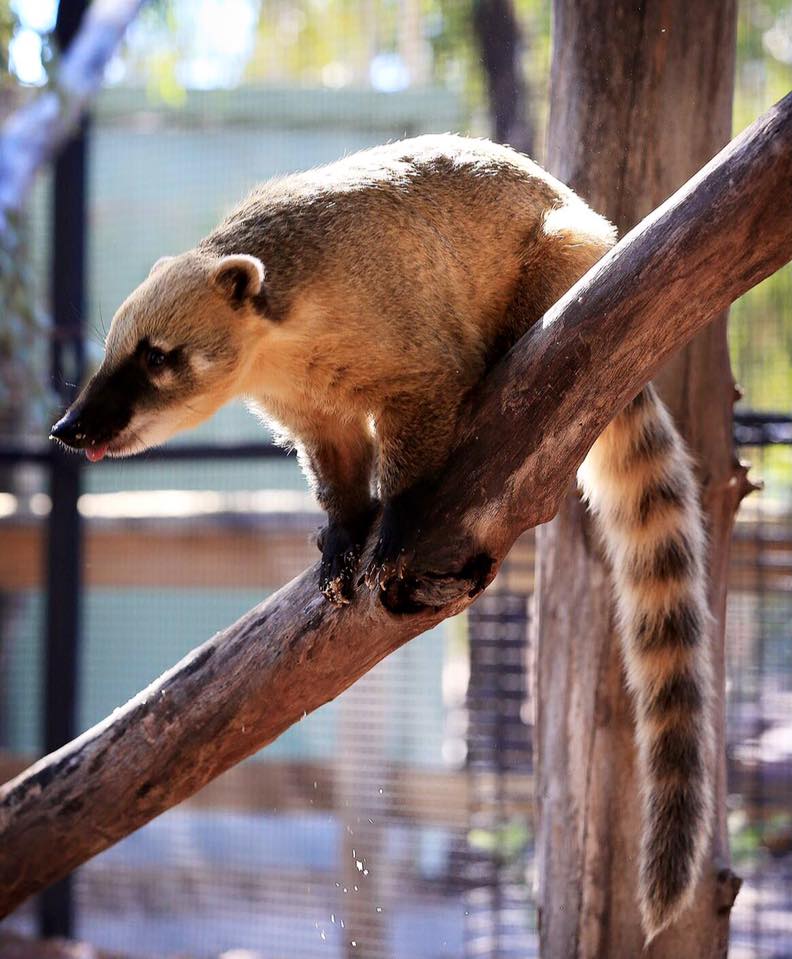South American Coati (Nasua nasua)
Habitat:
The South American Coati lives primarily in forest habitats, including deciduous forest, evergreen forest, gallery forest, cerrado and dry scrub forest from Columbia & Venezuela to Uraguay & Northern Argentina. They occupy a large range of elevations, reaching up to 2,500 metres in the Andes.
Description:
Coati are dark brown, grey, or brightly rust coloured on top and white or yellow/light brown underneath. The head is narrow with the nose slightly turned upward and elongated, and is very flexible. The muzzle is brown with pale spots above, below, and behind the eye. The ears are small and fringed with white on the inside rims. Their long tails are black to brown with yellow rings. Adults measure 41 to 67 cm from head to the base of the tail, with the tail 32 to 69 cm to their length. Coati are about 30 cm tall at the shoulder, and weigh between 3 and 6 kg. They have strong claws and forelimbs to climb and dig out food from under rotted logs and can reverse the joints of the anklebone to descend trees headfirst.
Status:
Least Concern
Interesting facts:
- The name ‘Coati’ comes from native American Indian words meaning ‘belt’ and ‘nose’, referring to the way Coati tuck their nose into their belly while sleeping.
- South American Coati are also known as Ring-tailed Coati.
- Coati are diurnal (active during the day) animals.
- Female South American Coati live in groups which forage and rest together, but adult males are usually solitary.
- Diet: Primarily omnivorous, Coati usually seek out fruits and invertebrates, palms, eggs, larval beetles, scorpions, centipedes, spiders, ants, termites, lizards, small mammals, rodents, and carrion when it is available and on the rare occasion can take chickens .
- A Group of Coati is better known as a "band".
- Regular communication consists of whining sounds. In the case of danger, animals produce loud woofs and clicks.
- Gestation: Females give birth to litters of 3 to 7 young 74 to 77 days after mating. Females care for the young in isolated tree nests until they are able to walk and climb, at which time they re-join the social group. Mothers continue to nurse the young until they are weaned around 4 months of age.
- Reproduction: Females become sexually mature at 2 years of age, and male mature sexually around three years of age. The mating system is polygynous, where one male is accepted into a band of females near the beginning of the breeding season.
- Predators: Birds of Prey, Jaguars, Mountain Lions, Boas and Ocelots,
- Lifespan: 8-15 years.






